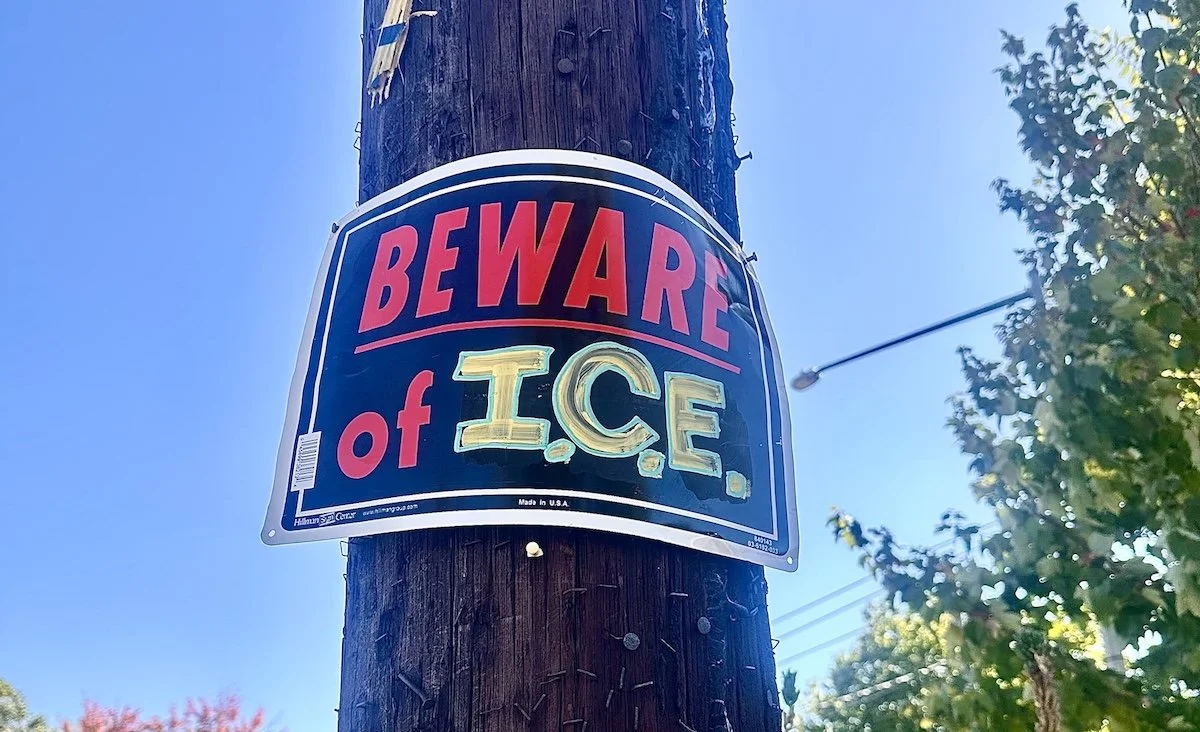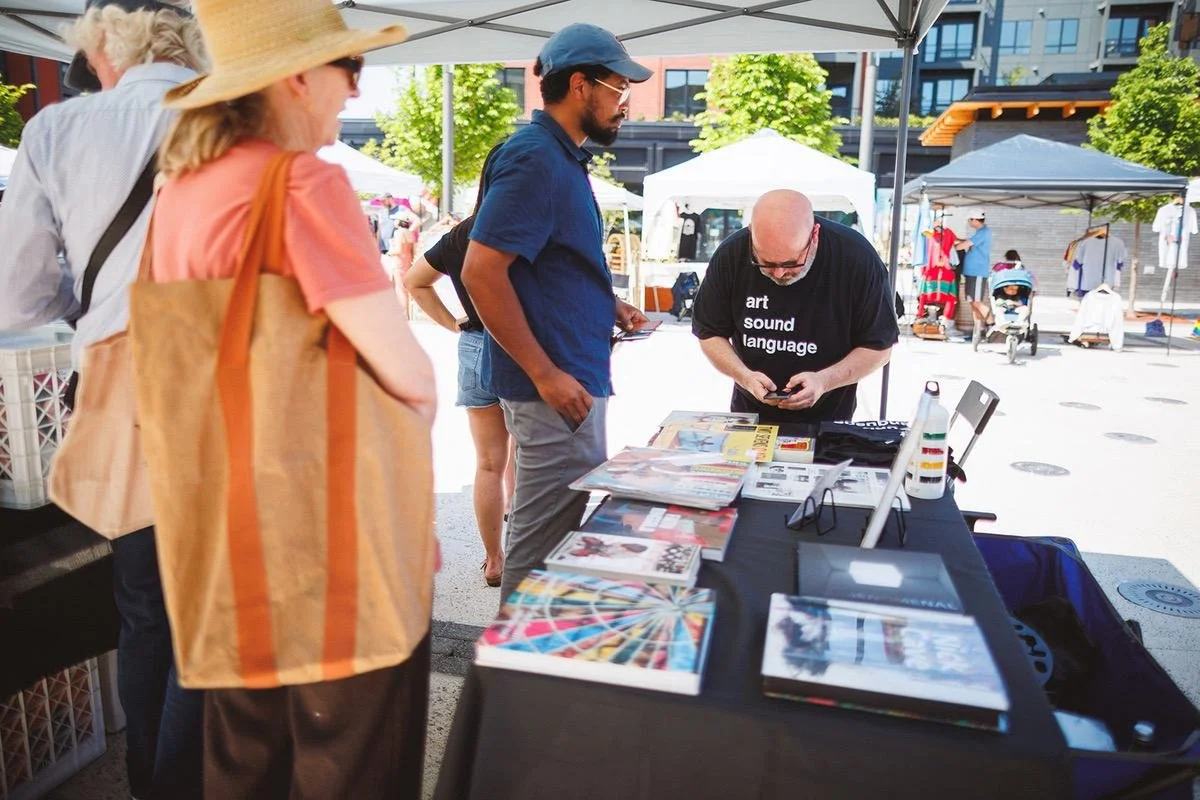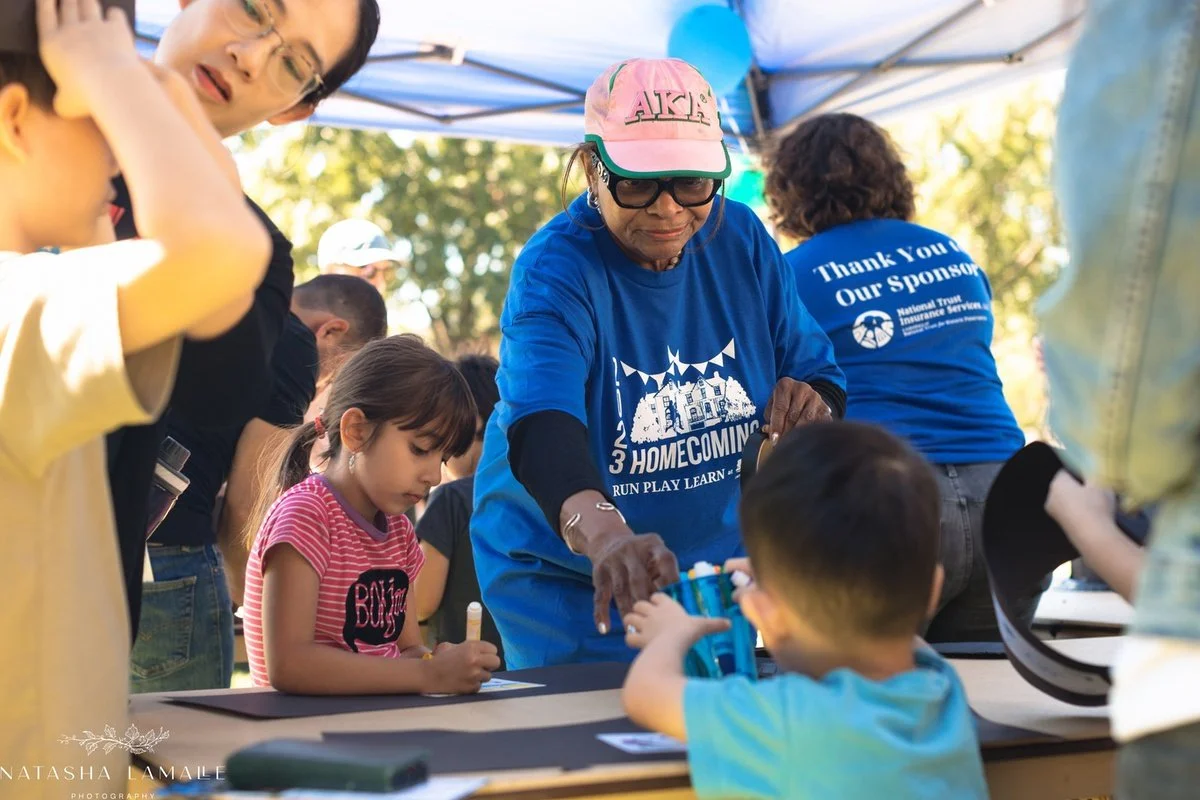A ride along with 4D MPD, part 2
/Here’s part two of my ride-along article with MPD Lt. Van Crawford that I conducted on April 7, 2015. (The first article is here.) Remember, treat all quotes as my recollection of the conversation. Part two is longer than part one, so you might want a refill on that coffee.
After we left the fellow asking about the neighborhood, we went through several areas talking about specific problem houses. I won’t mention addresses, but do want to give you an idea of some of the issues we discussed, and a high-level overview of MPD's plans.
As we drove down Kansas Avenue, I asked Lt. Crawford about how often he gets out on patrol in the neighborhood. “I try to get out on patrol when I can,” he said. “And of course, I go out to respond to calls [when a lieutenant is needed].”
Then a kid on a tiny dirt bike zoomed out a few streets ahead of us, zipping around. “Ok,” I said, “What about those annoying things? Aren’t they illegal?” I asked.
Looking south toward Sherman Circle
“They are, but we don’t chase them. The potential for a mishap or accident is too large with a car chasing one of those. And besides,” he says, as we turn onto the street the bike zipped down a few moments before, “I think they want us to chase them. It’s part of the thrill.” But MPD is looking for where they store those dirt bikes.
He took me down a few streets and pointed out houses or businesses that MPD is or was watching. He talked about how the Blessed 7-10 convenience store is robbed at least once a summer, so during the summer they try to give the store more attention from patrol cars.
One of the most interesting things Crawford said was in regards to problem houses where there’s generations of people committing crimes. We drove along Crittenden Street and talked about the crews in the area, and how in many instances, gang affiliation and association is generational. It’s mainly drug issues, and the crimes that occur because of the drugs, like theft from cars, home break-ins, carjacking. “It supports their needs,” he said.
We looked at homes on Crittenden, Kennedy, Farragut, Varnum… places where juveniles and others in their early 20s were living with grandparents or a single parent. In some cases, all three generations had police records.
“This house here,” Lt. Crawford said, pulling up in front of a house (I did not take any pictures of the homes he pointed out, by the way), “This house is very well-known by us. We've gone in a few times in the past, and we’re actively watching them now.” He mentioned that the Office of the Attorney General was dealing with a few other nuisance properties.
We passed another house with two guys hanging out on the porch in undershirts. Crawford nodded his head as we passed them and mentioned that both have been arrested for drug or robbery crimes.
Blight still remains an issue in some areas of PSA 407. This will likely change with the increase in development and flipping.
One of the topics that has come up several times with Commander Manlapaz and Chief Lanier (along with the Mayor) is the need for a comprehensive plan to deal with the socio-economic issues plaguing some of these areas. It’s education, blight, job-skills, re-entry options when coming back from incarceration, support for single mothers … it’s not just about policing. Chief Lanier has said it, Commander Manlapaz has said it: it’s about the need for education improvements, jobs and to provide real opportunity, it’s not only about cops on the streets. But the cops need to be there and need to be proactive.
Part of that proactive approach is how MPD deals with the people and homes they know house repeat offenders. Sometimes there’s plain clothes officers, sometimes it’s stepped-up patrols and the portable lights, cameras, etc. He mentioned a recent arrest for burglary because plain clothes officers spotted young men in an alley.
This "Capital i" was on a couple of garage doors.
Lt. Crawford described how some would-be criminals often go through the alley, looking for ways in, empty homes, easy access. It’s this behavior that MPD is on the look-out for. We drove through a few alleys together, looking at gang signs and other graffiti, and came across either the weirdest gang sign ever, or a superhero logo. Lt. Crawford called it in for cleaning.
“We put an officer in Sherman Circle for a long time for two reasons,” Lt. Crawford said as we drove around the Circle. “There was someone in the area that we needed to monitor, and we wanted them to know we were there. The other was a traffic calming initiative requested by the residents.”
This brings up another point that’s been made by Commander Manlapaz and Lieutenant Crawford many times. They desperately want citizen participation. I’m sure residents can be annoying, but residents showing up at PSA meetings and talking with the lieutenants and officers like Inspector Vendette Parker (4D sub-commander and head of the substation at Park Rd), is important to MPD. So is calling 911.
“If you see something suspicious, you should call us,” Lt. Crawford says. It’s the well-worn sentence used at every ANC and PSA or crime meeting. “You won’t be bothering the police.”
MPD feels that 911 calls help them connect to the community (Chief Lanier recently reported that MPD was among the fastest in terms of response times around the nation). “If you call, we have to show up.”
The calls help MPD build an image of problem areas. Gunshots? Call 911. See some people in an alley and you don’t think they belong? Call 911. Commander Manlapaz likes to tell the story of a robbery arrest made when residents called to say something suspicious was going on in the alley near a neighbor’s home. Turned out, it was in the middle of being robbed.
As we drove through the area, I realized we were about to pass my house. That coffee from this morning was speaking to me, so I asked if we could stop.
I brought my daughter out to meet Lt. Crawford and see the police cruiser. She was interested in the car but shy about meeting a stranger (I’m ok with that). What was nice is my neighbor came out and asked if we were ok — it’s not usual to see an MPD patrol car outside our home, with me standing next to it. I appreciated that she asked. I was quick to point out to her that this was a ride-along with me in the front of the car, not in the back. ;)
We stopped along our way, and Lt. Crawford introduced me to Patrol Officer Clinton Brown. I definitely wanted to talk with a patrol office and not just a “white shirt,” as MPD leadership likes to refer to senior leadership. I was curious about the point-of-view of the street patrol.
Officer Brown was polite, but a bit standoffish at first. Makes sense, he doesn’t know me, I’m some goofy guy with a camera and a note pad. He’s a big guy, especially in his bullet-proof vest. He has 23 years on the force, and has been in PSA 407 since 2012. He lives in Southeast DC (6D) and was born in 7D.
We talked about his relationship with 4D and PSA 407, and what a typical day was like for him.
Officer Clinton Brown and Lieutenant Van Crawford
“It’s quiet in the morning, mainly,” Officer Brown said. He works the day shift, when most of their efforts are responding to take reports or follow-up from calls the night before. “It picks up around noon. The drug dealers, well, I guess that’s when they wake up,” he says with a slight dry laugh. (I heard the same thing from Lt. Crawford. I guess if I were a drug dealer, I’d sleep late, too.)
He said you have to have the heart to be a cop in DC. “About 75% of the time, you see negativity from residents. You have to let it slide off you,” he said. "You have to have a thick skin." He admitted that’s partly from who he has to deal with on a regular basis. It’s not kids’ parties and social interactions, it’s dealing with drug dealers, the unwilling-to-cooperate victims, and people who don’t want to talk to the police.
Officer Brown said the crimes he sees more often in PSA 407 are robbery / snatches. What he called “crimes of opportunity.” People standing at a bus stop with their phone or money out. Someone is watching, comes by, robs them of their phone or cash. He gave an example of a recent robbery by a juvenile at the bus stop at Sherman and Kansas. “People need to pay attention and not make themselves an obvious target,” he said.
The other issues are related to drugs and the crews, like the Crittenden Street Crew and Kennedy Street Crew. There are drugs and robbery they deal with (and lately, shootings).
I noticed he had a body camera on his shirt, and we talked a bit about the idea of recording interactions. The camera takes constant video once they turn it on (it’s not always on). He shrugged noncommittally when I asked his opinion of the cameras. “I think they’re a good idea,” he said. “It protects citizens and the officers. I don’t see it as a hindrance.” (According to Chief Lanier, DC is rolling out body cameras to all officers soon. There are plenty of rules governing their use, and who gets to see the footage.)
I asked him about the neighborhood and his opinion of residents. “The neighborhood is changing,” he said. “It’s much better now.” I asked him why he thought that was the case.
“The community is bonding now,” he said, “Watching out for each other. It makes a difference.”
By the time I finished talking with Officer Brown, I think he warmed up to me. I wasn’t so bad, for a blogger. And he wasn’t so scary, for a really big police officer.
And that, fellow neighbors, is an important point. It’s a reason why you should go to the PSA meetings, and consider hosting MPD at your house for a block party or gathering. Officers routinely deal with the worst parts of our neighborhoods, and it isn’t often they get to see or participate in the better parts. They see the effects from the outside, but it’s from the outside. They build a wall around themselves and try to just do their jobs. With a job so important, recognition and connections to the people they protect is vital.
I think a better community engagement policy is to have officers get to know the people they’re serving and protecting, and give residents the opportunity to meet and interact with them. Yes, officers cycle through the districts and shifts, and the lieutenant, commander or patrol officer you’ve spent years getting to know is shifted to a new area. But it’s an opportunity to reconnect each time.
According to Lt. Crawford, MPD wants to partner with residents. We talked about a recent development in the area and the enormous impact it’s having on policing: people with cameras in and around their homes.
“There was a recent shooting,” Lt. Crawford said, “And one resident had several cameras in their home that faced the alley. They came forward and gave us the footage and it was incredibly helpful.”
Commander Manlapaz spoke recently about a crime being stopped when a homeowner received a notification from their camera in the house that someone was inside. The homeowner was able to call police and say right now, yes, right now there is someone robbing my home. According to the Commander, it was a bit comical as MPD pulled up; they caught the thief trying to escape out a window with a bag of loot over his shoulder.
MPD’s unofficial advice seems to be to get a security camera for your home. And if you have some that face an alley or a street, so much the better.
We talked about the idea of setting up some kind of registry, where people could inform MPD that they have cameras that face public areas like alleys and streets. “There’s a privacy concern for the resident, of course,” Lt. Crawford said. “But that would be immensely useful.” Maybe if it were some type of anonymous or protected process — even a simple email to the PSA lieutenant.
We also talked about his impending retirement. “The neighborhood has developed a nice rapport with you,” I told Crawford. “It’ll be a shame to lose that. Is there any overlap in your replacement and your time still left?” He laughed and said there was not, not with how personnel moves happened in MPD (or, as I know, in any government organization). “But I keep a book,” he said. “Information that can be passed on to the next PSA manager. People to look out for, people to look to for assistance. Yeah,” he said, glancing over at me with a grin, “You’re in there already.” (I'm gonna go on record and say I hope I'm on in the "assistance" column, not "troublemaker" column.)
Then I looked around and found myself surprised to be arriving back at the station. “The day went quick,” I said to Lt. Crawford.
I thanked him for his time that day, and his service to the community. I hope that the next PSA 407 lieutenant is as committed to engaging with residents in as open and honest a fashion as Lt. Van Crawford. Because that’s one reason he’s trusted by the community. And it’s how the police and the community can stay connected and partnered through difficult times.
I’m hoping to do another ride-along later in the year — here's hoping MPD approves it.
Because every good Petworth News article needs to end with a selfie with Drew.
Thanks for reading — this is the second inaugural post of the new PetworthNews.org blog, and your participation means a lot. Please feel free to share this site or article on Facebook, leave a comment or just click the Heart / Like button to the right to informally say you enjoyed it. It's good to know.
You can also send me feedback about this site.




















